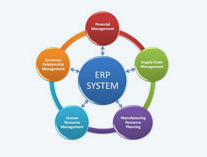State-of-the-art Offsite Development & Solutions
Vinculum Offsite Performance Centers are professionally equipped to set up client projects in a conveniently located site, using state-of-the-art technology and advanced communications and security systems. The flexibility offered through offsite development enables Vinculum to undertake customized projects that meets clients’ unique specifications, while providing a cost effective alternative to in-house development.Some of the services offered by Vinculum:
Project Management, System Analysis and Design, Programming and Implementation, Legacy System Maintenance, Automated Testing Solutions, Enterprise Testing Solutions, Architectural Design, System Expertise, and Expertise with Internet Development Tools and Environments. Helping our partners grow their businesses with the best platforms, tools and support is central to our mission.Benefits of Off-Site Software Development:
- Cuts cost up to 40%
- No capital expenditures
- Access to a wider and deeper range of skills than those that may be available within the client's organization and in the time required for the project completion
- Access to in-house technical resources
- Rapid deployment of contract resources to meet the peaks and valleys of the project workload - less need for client resource smoothing
- Less day-to-day client management than required than for n in-house projects
- Contractually enforceable commitment to results
Type of projects suited for Off-Site Development
- Maintenance and minor enhancement of legacy applications
- Conversions and migrations to new platforms
- Re-engineering of existing applications for new environments
- Fresh development - Software where the low level design is already frozen
- Web based software development – E Commerce
Factors in the Off-site Development Model
The factors involved in the Off-Site development model are project characteristics, project management and organization, project workflow and cost considerations.The project characteristics include functional requirements, technical requirements, platform requirements, and schedule management.
Functional Requirements
The functional requirements of the proposed application need to be conveyed to the off-site team in unambiguous terms. The first step in communicating the total requirement is to provide background information on the business purpose of the application. The background information enables the off-site team to undertake the project with clear knowledge of client expectations.Platform Requirements
The off-site project team must have relevant experience in identical hardware and software platforms installed at the client’s site. This includes the same versions of the operating system, programming tools, database, etc. It is very rare that any two systems are configured identically; expert judgement must be exercised to ensure platform compatibility with the outsource facility.Schedule Requirements
The schedule of delivery of both contract products and client reviews should be established as early as possible and coordinated with the management and staff of the offsite facility. Any schedule dependencies, such as the delivery of third party software or client approval of prototypes should be clearly identified.Project Flow
Project Initiation
Project initiation for an off-site project is very similar to that for an on-site project, including such activities as:- Contract and other commitments (resources, tasks, schedules, deliverables)
- Definition of requirements and standards
- Definition of technology infrastructure
- Definition of critical success factors
The major differences in initiating an off-site project vs. an on-site project are:
- More reliance on written, especially electronic, communication than on oral communication
- Allowance for the off-site startup phase both in terms of schedule and cost
Off-site Startup
In addition to project implementation planning and familiarization with client requirements and standards, the major activity for off-site startup is replication of the client’s current platform (for maintenance or conversion projects) or of the client’s target platform (for new development). As mentioned above, this may require time.Prototyping (for client/server and e-commerce projects)
If the application is prototyped before “real” development begins, it should be done at or near the client site because prototyping requires frequent and intense communication with the client project manager and also with the client sponsors (end users). If the functional and technical specifications are very clear and fixed, then the prototype also can be developed at the off-site facility.Testing
The project initiation phase must include a well-designed test plan, from unit testing through final client QA acceptance testing. An offsite development project could fail due to lack of test data at the offsite facility and lead to conflicts between the off-site team and the on-site teams. Errors, which could surface at the client site, may not show up at the off-site facility because they have only a subset of the test data. When these errors cannot be replicated at the off-site facility, it will be difficult for the offsite team to identify and fix them. For Type A projects, such as maintenance of legacy systems, if the offsite team is working directly on the client system via high-speed links, access to the test data will solve this problem. For other type of projects, the required volume of test data has to be generated and installed at the off-site facility.SIGNOFF: Client Acceptance and Turnover
Client acceptance testing, parallel testing (if required), and turnover are performed basically in the same way for off-site as for on-site projects. Technical and user documentation is turned over for client review. If required, Vinculum trains client staff in system operation and maintenance. Vinculum provide telephone or on-site support as required by contract.Project Conclusion
At the conclusion of the project, lessons learned are documented for future guidance of both Vinculum and the client. Key project metrics are generated and used to guide planning and costing of future off-site projects.Cost Considerations
Organizations often opt for off-site development to save money either directly or indirectly, by reducing opportunity costs and deploying in-house staff for other beneficial projects. In situations where there is one client and one outsource project, the project scale should be large enough for savings to be realized, due to startup costs and schedules. Significant savings can be realized if there are complementary concurrent projects (for the same or different clients) or a series of projects for the same client, related by common target platforms and common technical standards, reducing startup infrastructure costs and learning curves. If there is a series of projects related to a common overall business process or goal, client can gain further efficiencies.Risk, off-site or on-site, is also a cost for inclusion in the total project cost calculation. The client and Vinculum perform total risk analysis before the project initiation. This cost-benefit analysis should involve the off-site team. In short, we optimize IT investments of companies by providing high quality technology solutions, project management and by building enduring relationship, acting as a land bridge for global optimization of resources to create a cost effective software development process.
















